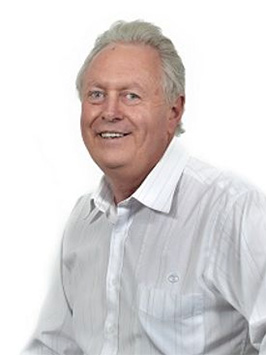Can mining towns pave the property investment path with gold?
Mining towns have the potential to deliver to real estate investors double the rent of a capital city property at around a quarter of the purchase price.
If an investment property near a pit mine in a desert town sounds like a risk of digging yourself into an investment hole, then consider median house prices in a town like Western Australia’s Kalgoorlie, which can be a quarter the price of Sydney’s and offer double the rental returns, or more.
Mining towns have a justified reputation for volatility but for investors with eye for rental yields and capital growth when other city markets are ebbing, mining towns around Australia potentially rich rewards.

Gavin Gilmore, Principal, First National Kalgoorlie Real Estate
First National Kalgoorlie Real Estate’s Principal, Gavin Gilmore, told Australian Property Investor Magazine the returns on a property in Kalgoorlie are better than in any city.
“We used to have a median house price of about $330,000 but I reckon if they did the stats today it would be closer to $500,000, and we’re renting four-bedroom, two bathrooms, modern, furnished facilities, for $1200-$1300 dollars a week.
“Furnished is an unusual fit for that type of thing, but what’s happening is the mining companies are taking them on to put multiple workers in it, because they can’t find accommodation for them individually.”
Mr Gilmore said the yields were double or triple that of a city property.
“If you were selling an investment property, we’re probably talking 8 or 9 per cent return, whereas in a capital city you’re probably talking 3 to 4 per cent in general, so there are significant advantages.
“Our prices aren’t expensive compared to capital cities, so our median house price is closer to $500,000, and obviously if you’re in Sydney it’s $1.5 million, so it’s much easier for people to buy here and it’s not a big loan.
The Real Estate Institute of Western Australia (REIWA) puts Kalgoorlie’s annual growth at 17.5 per cent, the annual median house price at $323,000 (or $381,500 in the upper quartile).
A 1,012m2 on Dugan Street was recently rezoned from central business to medium urban rise centre, creating an opportunity for developers to build up. The listing price for the land is $310,000, according to REIWA.
Property data company CoreLogic’s research director Tim Lawless noted in the company’s Home Value Index October 2022: “We are still seeing some resilience to value falls around the more affordable areas of Adelaide and Perth, as well as some regional markets associated with agriculture, mining and tourism.”
Kalgoorlie reflects this, bolstered by its proximity to surrounding mines.
Jobs and long-term future
Mr Gilmore was adamant that the investment pipeline that showed no signs of abating would ensure the long-term viability of any property investment in the town.
The only problem he saw was a shortage of available properties to accommodate the incoming workforce.
“We have a nickel smelter here just out of town that employs quite a lot of people.
“Linus Gold, who are a rare earth’s manufacturer, are building a $500 million dollar plant here now,” Mr Gilmore said.
“They want to employ locals but accommodation is the biggest issue for them at the moment. “They’re in construction phase and as much as they’d prefer having their people on site, FIFO (fly-in fly-out) is their most realistic option for now.
“There’s another company that’s going to spend a couple of hundred million to build a battery plant here, because we’ve a lot of lithium.
“Pretty much any ore that you mine, you’ll find in a 400-kilometre radius of Kalgoorlie - we have iron ore, we have gold, nickel, silver, palladium, pretty much all of it.”
He said the positive effect on Kalgoorlie’s property market will remain long term.
“The Gold Mile, which is the super pit that has been a mine site since the 1850s, is a very long-term mine that’s still producing and can keep going on for a lot longer,” Mr Gilmore said.
In the current market, he says there are still a lot of people buying.
“They don’t want to be caught in the rental trap and because rents are increasing significantly and people also sell their investment properties, they’ve got to go and find a rental property, but that’s difficult, so people buy,” he said.
“What usually happens is when people do leave after a few years, they keep their property and rent it out because they get good returns.”
Mudgee gone mad
In August 2019, the median unit price in Mudgee was $241,000 and the house price just $398,000.
Today the median house price sits at approximately $719,000, while the unit price has more than double to $513,000.
The cost of housing and other expenses has skyrocketed to the point that many locals have had difficulty living in the town located 270 kilometres northwest of Sydney.

Andrew Palmer, Director, The Property Shop
Though surrounded by various mining operations, including coal and gold, The Property Shop Director, Andrew Palmer, in Mudgee, says the town is not entirely dependent on resources to thrive.
“We’re very fortunate that we’ve got a bit of diversity here with things like tourism, which has grown substantially, particularly in the past 10 years.
“It’s really boomed and funnily enough to some degree, opened a little bit after the last time coal prices fell dramatically, back in 2013.
“Before that, mining projects and contracts and so forth had taken up pretty much all of the accommodation in town, including motels and short-stay accommodation.
“After that, it opened up the opportunity for tourism, which has grown rapidly since then.
“We’re not 100 per cent dependent but resources do certainly provide a very, very solid, employment and economic base.
“They’re typically well-paid jobs and it does certainly provide a bedrock for the property sector,” Mr Palmer said.
A recent boost also came in a NSW state government announcement that thousands of additional homes are set to be unlocked in the Mid-Western Region thanks to a partnership between the state and local governments.
“The funds will certainly help but there’s obviously a long lead time for that to take effect,” Mr Palmer said.
“There’s some projects that the council are commencing now, which will release additional blocks of land to build affordable housing and they have a site themselves they’re intending to develop for affordable housing,” Mr Palmer said.
“That fund and those projects won’t make a difference overnight - the land has to be developed and houses put on them before they make an impact.
“We’re in for a reasonable period of housing shortages for a while yet.”
Rental yields
This difficulty is translating into strong rental yields.
“The rental yields are high - pre-Covid they were 5.5 per cent as a yield but now they’re closer to a 4.5 per cent,” Mr Palmer said.
“There was obviously a substantial capital rise in property prices across the Covid period.
“It rose across the region by 40 per cent on average.
“Rents don’t jump at the same pace, as people can only increase rents once a year, but they’ve certainly jumped up over the past 12 months.
“Mudgee’s always been a very solid market.
“We don’t see prices fall, there’s not big corrections - it’s a sustained steady period of growth we go through.”
“For investors, they’ve got very low vacancy rates across a long period of time, reasonable capital growth across that period and then there’s likely to be a period where there’s sharper growth as well,” he said.
The future of resource towns
In research conducted by Australian Housing and Urban Research Institute (AHURI) that looked at the economic dynamic and population changes of Australia’s regional cities, in the context of informing future policy, it found mining can be both an opportunity and vulnerability for regional urban centres.
“While the mining boom of the late 2000s boosted employment in some regional urban centres, much of this was cyclical employment in the mining sector—and as construction completed, population declined with employment in some centres,” the report said.
Gavin Gilmore agrees.
“If you went into any resource-based town today you would find there’s an undersupply of workers,” he said.
“If you went to any major mining town and asked what’s the biggest issues, most would say FIFO.
“Even for regional towns like ours where we have 30,000 people, FIFO is an issue, because lots of workers, especially singles, don’t want to leave the city.
“Mining companies have reached a point where FIFO is a part of their business model and they’re quite comfortable with it.
“I have a business that runs 25 staff, we do property management, strata management, commercial sales, we’re a regional real estate agency that does pretty much does everything, and it’s the first time in my history that I’ve had trouble sourcing staff.
“Where I’d get 30 or 40 applicants in the past, today I’ll get two.”




















